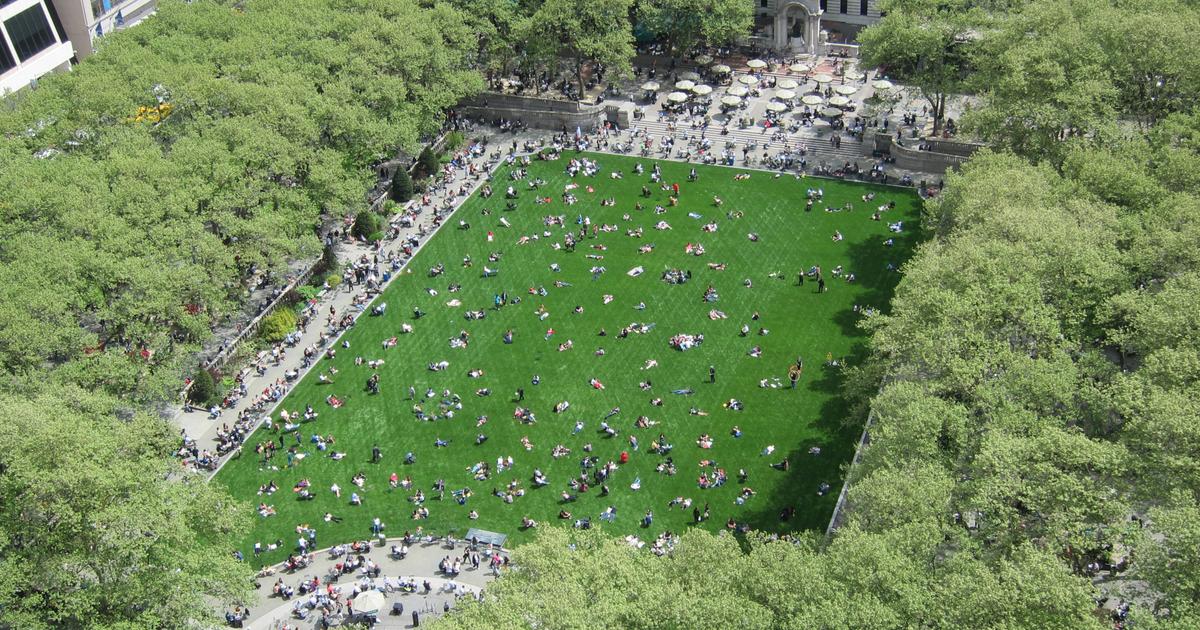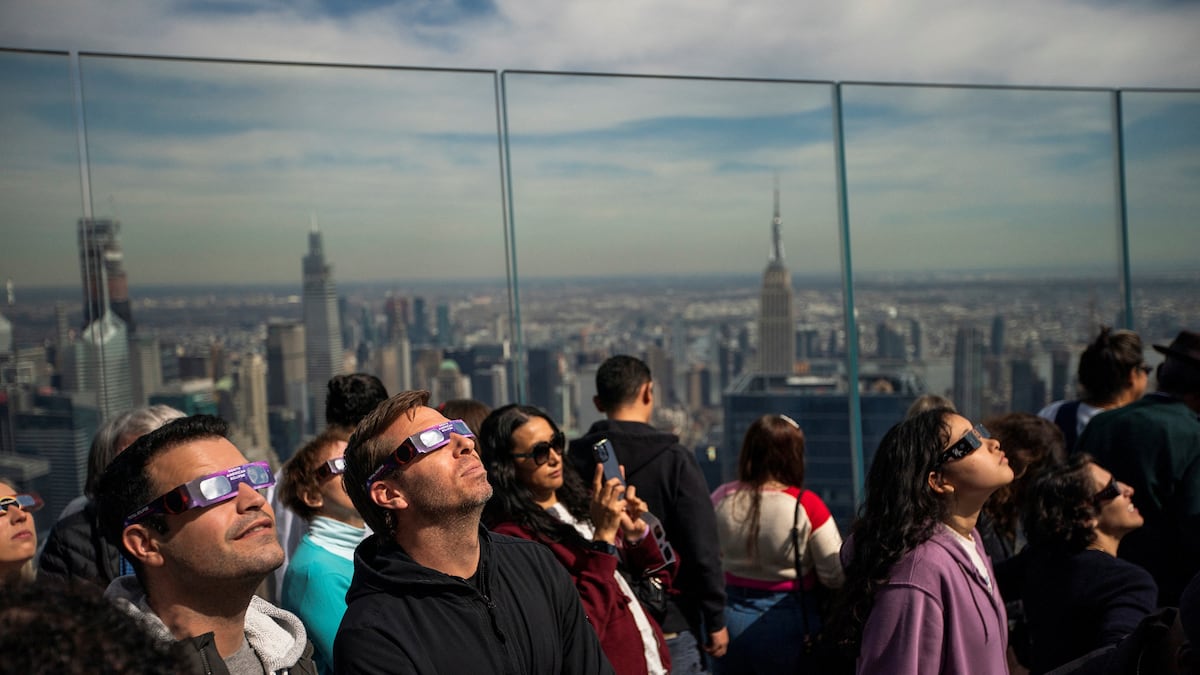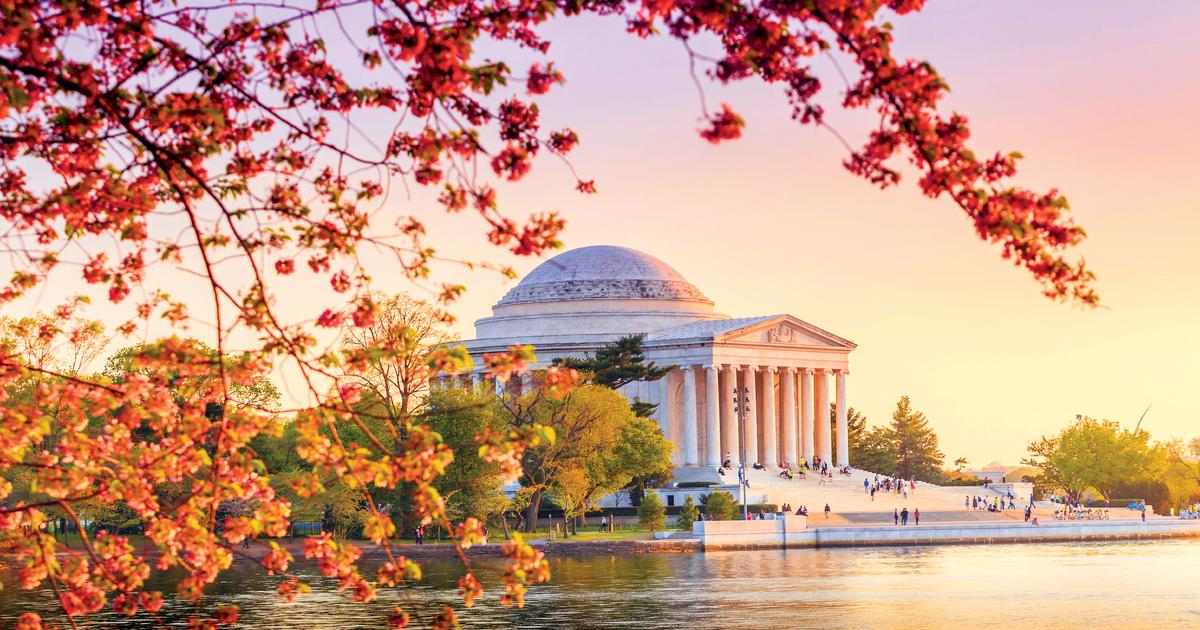If Central Park stands out as the largest and busiest of New York's parks, take a step aside by discovering 10 lesser-known parks which are nevertheless also worth a visit.
From the thunderous Bryant Park to the peaceful natural spaces of Marine Park, each has its own atmosphere and treasures!
Our selection also invites you to leave Manhattan to add a local touch.
To discover
Trips to the United States: tours, hotels and tailor-made stays from our partners
Read alsoTen of the most iconic hotels in New York
Bryant Park: the liveliest
Bryant Park is towered over by the buildings of Midtown.
Bryant Park Corporation
Steps from Times Square, 5th Avenue and the Chrysler Building, Bryant Park embodies the heart of Manhattan.
This park, inaugurated in 1847, was remodeled in 1934 then restored and revitalized in the late 1980s. It has since been managed by the Bryant Park Corporation, a private non-profit organization which hosts many events throughout the year.
In the summer, settle into a lounge chair for an outdoor cinema session.
In winter, take to the ice rink.
What to see: The restrooms in Bryant Park bill themselves as the most luxurious public restrooms in the city, with flower arrangements, classical music and more than 200 works of art on display on a rotating basis.
Read alsoThese French who conquered New York
Madison Square Park: the freest
Madison Square Park reveals the spire of the Empire State Building.
Marley White / NYC & Company
Named after US President James Madison, Madison Square Park opened in 1847 along 5th Avenue.
It remains famous in New York history for housing the Statue of Liberty's torch from 1876 to 1882, as part of a fundraising campaign to fund the monument's pedestal.
This bucolic and well-appointed park is particularly popular at lunchtime, when employees from the surrounding offices come to take their lunch in the aisles.
To see: the astonishing Flatiron Building rises in front of the southwest corner of the park.
This slender building is reflected in the Reflecting Pool, a body of water smooth as a mirror.
Read alsoFlight Paris-New York: which company to choose?
Washington Square Park: the most bohemian
Founded in 1871, Washington Square Park is the stronghold of artists and students.
Christopher Postlewaite/NYC & Company
At the very south of 5th Avenue, Washington Square Park marks the gateway to Greenwich Village, New York's bobo district.
The park is in unison with a post-sixty-eight atmosphere.
You may come across this student selling his poems, groups of musicians or this stand of badges committed against capitalism and the system.
In fine weather, the park attracts chess enthusiasts who play games under the gaze of onlookers.
To see: to the north of the park, the Washington Arch was built in 1889 on the occasion of the centenary of the presidential inauguration of George Washington.
A monument inspired by the Parisian Arc de Triomphe!
Hudson River Park: the longest
The Hudson River Park dominated by the One World Trade Center tower.
Max Guliani/Hudson River Park
The Hudson River Park project was launched in the late 1990s to rehabilitate the port wastelands of the Hudson River.
This narrow strip now stretches nearly 6.4 km long, between 59th Street and the southern tip of Manhattan.
A bike path and a pedestrian route allow you to follow the Hudson and enjoy the view of New Jersey.
Six old pontoons have been rebuilt and fitted out with green spaces, works of art, sports facilities and games for children.
To see: a former cruise ship terminal at the beginning of the 19th century, Pier 59 saw the survivors of the Titanic disembark.
The place now houses the Chelsea Piers sports complex.
Read alsoThe ten most beautiful views of New York to gain height
Gramercy Park: the most exclusive
Opened in 1841, Gramercy Park has been closed to the public since 1844. Eden, Janine and Jim
Designed in 1841, Gramercy Park eventually gave its name to the neighborhood of Gramercy Park, an opulent residential square between the business center of Midtown and the more popular streets of the East Village.
Proof of this character apart, Gramercy Park is the only private park in Manhattan.
As such, it is therefore forbidden to the public and you have to be content to admire it from the outside, through the gates.
Who can enter?
Only the owners and tenants of the forty buildings bordering the park can request a key.
To see: in the center of the park, from afar, you will see the statue of Edwin Booth, one of the most famous theater actors of the 19th century.
Four Freedoms State Park: the most political
Four Freedoms State Park honors Franklin D. Roosevelt, 32nd US President and a native of New York State.
Kenlarry
Located at the southern end of Roosevelt Island, between Manhattan and Queens, the Four Freedoms State Park honors Franklin D. Roosevelt, President of the United States from 1933 to 1945. The park highlights his famous speech on the state of the Union pronounced in 1941 and in which he consecrated the “4 freedoms”, starting with freedom of expression and freedom of religion.
A long perspective leads to the mineral memorial, dominated by a giant bust of Roosevelt.
Right next to it, you can browse a quote from the speech carved in stone.
To see: behind the bust of President Roosevelt, the banks of Four Freedoms State Park offer an unprecedented panorama of Manhattan and the East River.
Read alsoNew York and the cinema, when a city bursts the screen
Flushing Meadows-Corona Park: the most universal
The Unisphere, the iconic landmark of Flushing Meadows-Corona Park.
Kate Glicksberg/NYC & Company
In the heart of the Queens district, the old swamps around the Flushing River gave way in 1939 to Flushing Meadows-Corona Park, a park built especially to host the 1939 World's Fair. The park was reused for the exhibition of 1964, with some additions.
Flushing Meadows has hardly changed since: many pavilions have been preserved and converted, including the opening of the New York Hall of Science in 1964 and the Queens Museum in 1972. The park also hosts the annual tennis tournament of the US Open.
To see: symbol of the 1964 Universal Exhibition, the Unisphere is a huge steel terrestrial globe 43 meters high.
Brooklyn Bridge Park: the most panoramic
Brooklyn Bridge Park offers breathtaking views of Manhattan.
Julienne Schaer / NYC & Company
Brooklyn Bridge Park is one of the latest parks in New York: it opened in 2010 along the East River, at the foot of the Brooklyn Bridge and the Manhattan Bridge.
A perfect location to admire the Manhattan skyline and New York Bay, quietly seated on a bench.
The park also has a pontoon entirely dedicated to sports enthusiasts, with football, basketball, handball, volleyball courts and even a climbing wall.
To see: every year, Brooklyn Bridge Park gives carte blanche to artists and exhibits their creations in the aisles.
The list and location of the facilities are available on the park's website.
Prospect Park: the most landscaped
Prospect Park covers approximately 2.1 km², compared to 3.4 km² for Central Park.
Martin Seck / Prospect Park Alliance
Prospect Park was built from 1867 to 1873 under the direction of Frederick Law Olmsted and Calvert Vaux, the duo of landscape architects who imagined Central Park.
The second largest park in Brooklyn has a family resemblance to its big brother in Manhattan: long lawns, wooded hills and spaces for picnics and outdoor concerts.
Prospect Park is also home to Brooklyn's only lake.
To extend the walk, cross Flatbush Avenue and visit the Brooklyn Botanical Garden.
To see: every Sunday, from April to October, percussion enthusiasts meet in the afternoon in Drummer's Grove.
Crazy rhythms!
Marine Park: the most maritime
The Marine Park was established in 1924 along Jamaica Bay.
Tdorante10
South of Brooklyn, Marine Park borders Jamaica Bay and the Atlantic Ocean.
This 3.2 km² park is almost as vast as Central Park but its atmosphere appears very different.
The saltwater marshes are populated by seabirds, crabs and colonies of oysters.
Along Gerritsen Creek, follow the Marine Park Salt Marsh Nature Trail, a hiking trail designed to facilitate wildlife viewing.
Golf enthusiasts can set off on the course built in 1963 in the northeastern part of the park.
What to see: Visit Marine Park's Salt Marsh Nature Center at 3301 Avenue U to learn more about the park's flora and fauna.









/cloudfront-eu-central-1.images.arcpublishing.com/prisa/Q5H3KVVB2NC5LG4QFRILPPD4B4.tif)





